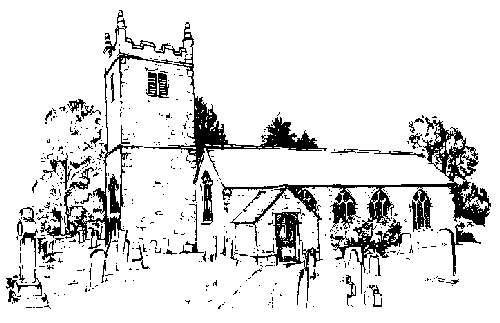
Discovering Cornish churches for the first time, visitors are often left with more questions than answers. Why are the buildings so solid and plain? Why are there so many names beginning with 'Lan'? Who on earth were St. Pinnock, St. Veep and St. Keyne? Why are so many parish churches all on their own, often miles from the main villages? The answers to all these questions lie in the simple truth that Cornwall is a land apart, with a history very different from the rest of England.
The unfamiliar saints to whom most of the churches are dedicated were Celtic missionaries from Ireland and Wales who, in the 5th, 6th and 7th centuries, brought to Cornwall a strain of Christianity which had developed along different lines from the faith which was reintroduced to Saxon England by the Romans in 597 AD. These holy men and women set up their oratories, simple shelters of stone and wood, on the banks of tidal rivers or near springs of water on valley sides, not necessarily anywhere near the centres of population, and here the people came to hear them preach.
The sites of many of Cornwall's churches date back to these early days, and clues can often be found in the old church or parish names. In the Cornish language 'lann' means a church site (in those days, a curved enclosure containing a chapel and burial ground); thus churches like Lanreath, Talland and Lansallos can trace a direct line back to the Dark Ages. Confusingly, with Lanteglos it is the 'eglos' which means Church, not the 'Lan' which in this instance comes from 'nans' meaning valley.
The conquering Normans rebuilt the Celtic chapels, but the great rebuild of Cornish churches came in the 15th century and much of what can be seen today dates from this time. If the churches themselves seem architecturally uninspiring, this may be because, in the words of Sir John Betjeman, they 'are not so much architecture as building ... the best that a religious, remote people could do to make the House of God the most glorious building in the parish'.
The seventeen churches covered in this magazine are a good cross-section of those to be found throughout Cornwall. Further information can be found in guidesheets and books on sale in the churches. There is usually ample parking available near the church, but mention is made in the text of those Cases where it is restricted.

There is an almost eerie loneliness in the situation of Braddock church, with nothing but the 19th century Rectory (now a private house) and the ruins of the gardener's cottage and the old glebe farm buildings for company. Originally a chapelry to St. Winnow, Bradoc became a separate parish in the early 14th century. The original Norman church was cruciform and the font dates from this time. Nearby is the site of the Battle of Braddock Down, a famous Royalist victory in the Civil War.
The little parish church of Boconnoc is set in the heart of a large and ancient private estate, part of which also happens to be a deer park. The setting is almost perfect -the church, like a family chapel, perched on a terrace above the 18th century house (not open to the public) and overlooking the glorious rolling parkland and woods. There is absolute stillness here and the strong sense of another time, another century. The church, which has a bell turret rather than a tower, is largely 15 th century, restored in 1873.
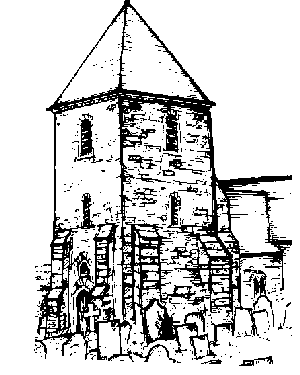
The two most interesting features of Duloe church are the tower and the Colshull chapel. The plan of the church is unusual in that the tower is attached to the south transept. This 13th century tower is massive, like a keep, and appears to lean slightly. It is exceptionally well preserved and topped by a l9th century pyramidal roof, said to be an approximation of the original. The north chapel, part of the l5th century extensions to the church provided by the wealthy Colshulls of Tremadart, is the glory of Duloe. Built as a chantry chapel where masses would be said for the souls of the departed, it is dominated by the mighty tomb of Sir John Colshull (who, in 1450, was the second richest man in Cornwall).
Lansallos Like a sentinel watching over the lonely sweep of Lantivet Bay, this now largely 15th century church has an air of simplicity and solitude. This is an ancient holy place the likely site of a Celtic monastic cell.
An old legend tells of the ghost of a monk who wanders down the church and across the graveyard. In this century the tower, a landmark for sailors and fishermen, has twice been struck by lightning.
This beautiful church. crooked with age, nestles beside a farm in the folds of hills that dip steeply towards the Fowey estuary. A dubious legend relates how St. Willow, the Irish missionary to whom the church is dedicated, was beheaded by a murderous kinsmen at Lamelyon and proceeded to carry his severed head up the wooded path from Pont to the site of the church, the blood which fell along the way colouring all the hedgerow flowers scarlet.
Daphne du Maurier walked up this same path, from the little quay at Pont, on the morning of her wedding in July 1932 to Major Browning.
Inside you can see the benefits of a really sensitive restoration and there is a wonderful feeling of space.
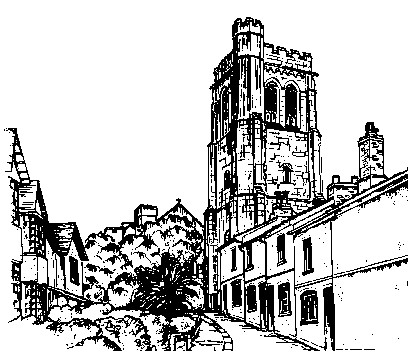
This powerful and impressive church, which towers over the huddle of streets and houses down in the old heart of Liskeard, is the second largest parish church in Cornwall, after Bodmin.
The bustling market town of Liskeard is one of the oldest towns in Cornwall, and in the 15th century, when much of the present church was built, it was also one of the wealthiest The Norman church which stood here before possibly resembled St. Germans, with two towers flanking the west front The sole tower standing today is modern but contains Norman remains which go to make up a west doorway and upper windows. Other Norman work includes the font in the north porch and a deeply splayed opening in the west wall of the present north aisle, its apex only 7 1/2ft from the ground.
At first sight It is hard to believe you are in Cornwall, or even in Britain The distinctive octagonal spire of Lostwithiel church imparts a curiously foreign air to the ancient Cornish town from which it rises so magnificently. The church's peculiarity is not confined to its spire; inside the nave is unexpectedly high, with clerestory windows (rare in Cornwall) above the 'lean-to' aisles, and the piers of Pentewan stone are octagonal and smooth, the line of the arches unbroken by capitals - overall It feels strangely like a French monastery. This is not entirely inexplicable, for in the 13th and 14th centuries from which time much of the church dates, Lostwithiel was the capital of Cornwall, a busy port with overseas links, and the church belonged to the alien Priory of Tywardreath. During the Civil War, in which Lostwithiel was much embroiled, Roundhead soldiers are said to have baptised a horse in the font, and to have blown up part of the church with gunpowder.
Morval Church has a strong sense of seclusion and privacy due, no doubt, to its proximity to Morval House, a superb, largely Tudor building which is not open to the public Although not far from Looe and a busy main road here you are in another century, another world. Typically, the church is mainly 15th century and was harshly restored, but some old woodwork remains in the north aisle roof. A row of hat pegs, a lively Sunday School board and the simple benches give it the air of a Victorian schoolroom.
This church, with its 14th century tower, dominates the busy village of Pelynt, but unhappily it was harshly treated by its Victorian restorers. The interior is dominated by a fine classical arcade of granite columns, erected c. 1680 to replace the Medieval pillars. Perhaps the chief attraction of the church is its association with the renowned Trelawny family. The Trelawny chapel contains many relics and an excellent brief history of the family is on sale in the church. There is a most inspiring description of Pelynt church in the glorious book "Freedom of the Parish" by the late poet Geoffrey Grigson, whose father was the vicar here.
This small crowded church with a slender tower overlooking the village of St. Keyne, is largely 15th century, although part of a Norman doorway remains to suggest that an earlier building stood here. The church suffered an unfortunately ruthless restoration by the infamous J.P. St. Aubyn between 1868 and 1877, and no old woodwork remains. The parish is chiefly famous for its holy well (signposted from the church).
The old mother church of East Looe is tucked into the shelter of the hillside below the main road to Widegates This is a fine church, largely 15th century but with some vestiges of the Norman cruciform building which once stood here.
It's wonderful Norman north doorway, dating from around 1140, is somewhat spoiled by an ugly Victorian porch; inside there is a partly-Norman font. There is much good woodwork to be seen, from the original wagon roofs to a feast of modern carving in pews and roodscreen.
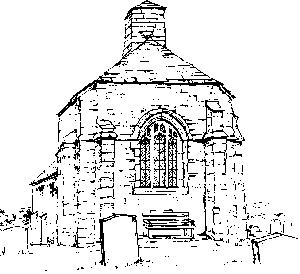
Dedicated to St. Nectan, or Nighton, a Celtic hermit beheaded by pagan robbers in the 7th century, this tiny chapel has served the northern part of St. Winnow parish since before 1284. The building has undergone many changes: enlargements made in the last century were removed in the 1970's and the present chapel formed out of the old structure. It is still in regular use in the summer.
St. Pinnock's fine yellow-lichened tower can be seen from afar, nestling amongst the remote hills and plunging valleys that surround the West Looe River.
A tiny peaceful church town huddles around this small church which is now mostly 15th century and was heavily restored in 1882.
Typically Cornish this stout, strong church stands high above the Fowey River with just a few cottages for company. The Norman cruciform church was enlarged, like so many others, in the 14th and 15th centuries and thoroughly restored in the 19th; the effect today is of rural simplicity, unadorned and light.
St. Veep is renowned above all for its maiden bells - a complete ring of six bells which came from their moulds in perfect tune and have never had to be tuned - thought to be unique in England. They were cast in 1770 “in the stillness of the night” in a meadow opposite the church.
The glory of St. Winnow is its position; ancient hallowed ground on the banks of the Fowey River with little of the modern age intruding to spoil the peace of centuries.
Nothing but the holy site itself remains of the simple oratory perhaps founded by St. Winnoc in the 7th century and little remains of the Norman church which succeeded it; St. Winnow is now largely 15th century and has been blessed with an unusually careful restoration.
The interior is made dark and warm by the wealth of old woodwork in roofs, benches and screen; there is an air of reverent grandeur here not often found in Cornish churches.
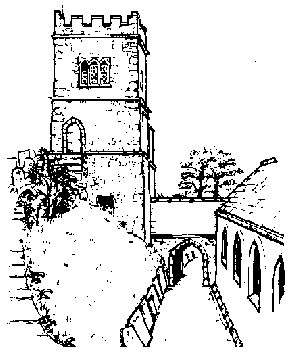
Huddled into a hillside to shelter from the sea on a lonely stretch of coastline, Talland is the mother church of West Looe and Polperro. Approach through the cramped churchyard along a path lined with slate headstones, the first sight of the detached tower is quite a shock. The lower storey of this tower is possibly 13th century, as are three lancet windows behind the organ in the west wall.
A late 15th century wagon-roof porch links the tower to the church. The interior is light and simple; dominated, quite rightly, by the marvellous 15th and 16th century benches. Pevsner writes that " the church is very completely pewed ".